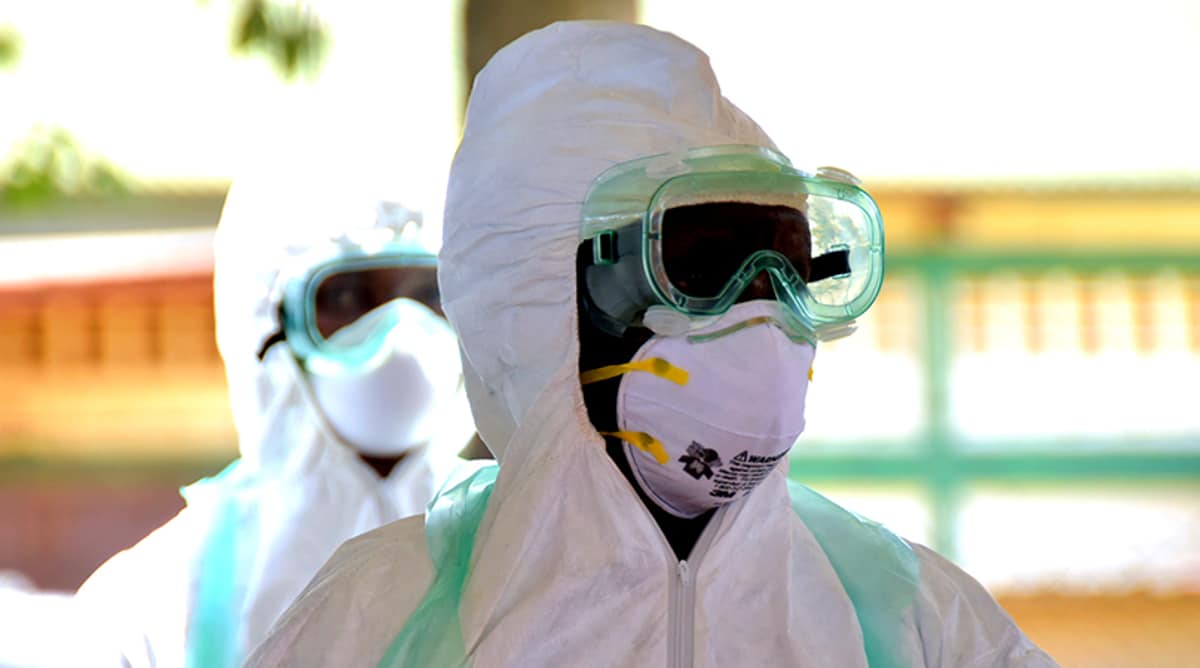CDC hazmat suits are encapsulating, highly specialized protective industrial garments worn in maximum containment or biocontainment laboratory facilities.
CDC Hazmat Suit Levels
Biohazards are biological or chemical substances dangerous to animals, humans or the environment. These substances are categorized into four safety levels ranging from BSL-4, which is the most dangerous, to BSL-1, the least dangerous.
Each level of biosafety requires distinct procedures to contain biological or microbial agents. Four different CDC hazmat suit designs are used for these different biohazard environments. CDC hazmat suits help reduce exposure risk of lab researchers, technicians and field workers to potentially infectious substances.
The Center for Disease Control states that the main elements to determine the hazmat suit level required are:
- The nature of the work conducted
- Transmissibility
- Severity of disease
- Infectivity

Other factors that also determine hazmat suit levels include the microbe’s origins, the route of exposure and the agent.
Are you researching hazmat suits? Check out our Essential Hazmat Suit Buying Guide.
Hazmat Suits Are Required in CDC BSL-4 Facilities
Biosafety Level 4 (BSL-4) facilities are run by the Center for Disease Control (CDC) in the United States. They are designed for dangerous pathogen research which have no vaccines or treatments available and are highly infectious.
Examples of BSL-4 facilities include the Center for Disease Control and Prevention in Atlanta Georgia and Fort Detrick, Maryland’s U.S. Army Medical Research Institute of Infectious Disease.
Special procedures and equipment are required in BSL-4 facilities such as shower exits, special waste disposal systems, quick-drench disinfectant showers, and airlock entry/exits.
CDC Hazmat Suits for Biosafety Level 4 (BSL-4) Environments
A high risk of infection transmitted through microbes in aerosol form is considered to be BSL-4. Microbes that cause these infections are usually fatal without vaccines or treatments. This includes the Ebola Virus and Wuhan Corona Virus.
Precautionary requirements for BSL-4 include:
- Labs need to be in a restricted or isolated zone of the building and need to have a dedicated air supply and exhaust air
- Each individual must shower upon exit of the lab
- Changing clothes before coming into the lab and wearing a full CDC hazmat suit with supplied air and positive pressure
BSL-4 CDC hazmat suits are designed to be completely airtight. They have positive internal pressure to prevent contamination to the wearer even if there is damage done to the suit.
A BSL-4 CDC hazmat suit is also known as a “blue suit”, “moon suit”, “space suit” or a “positive pressure personnel suit (PPPS)”.
Typically, filtered, fresh air is supplied to the BSL-4 CDC hazmat suits through overhead tubes. If the integrity of the suit is compromised, the air is forced outwards rather than inwards.
BSL-4 hazmat suits can be deployed in mobile units to locations where highly infectious diseases have broken out. To protect the wearers requires a constant supply of clean air. This necessitates a strong power supply, filtered air pumps, hoses and containment tents.
Extensive training is required to wear a BSL-4 hazmat suit and pursue research within these highly contained biohazard environments.
CDC Hazmat Suits for Biosafety Level 3 (BSL-3) Environments
The microbes considered to be BSL-3 can cause potentially lethal or serious diseases transmitted through the respiratory system. One example is the bacteria that causes tuberculosis.
BSL-3 labs have special design and engineering features designed to prevent microorganisms from being disseminated into the environment.
Precautionary requirements for BSL-3 include:
- Labs with double self-closing sets of doors
- Access to eyewash and hands-free sinks
- Use of a hazmat suit with eye protection and breathing filter designed to prevent inhalation of infectious microbes
BSL-3 CDC hazmat suits are often worn by CDC personnel, medical professionals and health department personnel in locations where infectious diseases have broken out.
CDC Hazmat Suits for Biosafety Level 2 (BSL-2) Environments
Moderate risk is posed by microbes in BSL-2 environments for lab workers. This includes hepatitis B and HIV.
Precautionary requirements for BSL-2 include:
- A set of self-closing doors at the laboratory
- Access to eyewash stations and hand wash sinks
- Wearing a CDC hazmat suit
CDC Hazmat Suits for Biosafety Level 1 (BSL-1) Environments
Microbes contained within CDC BSL-1 facilities are not known to be disease-causing in humans and pose minimal safety or health risks.
The primary purpose for wearing protective clothing is to prevent contamination of the research environment, and to minimize the risk of spreading microbes that can harm plants or animals outside the lab.
Precautionary requirements for BSL-1 include:
- Labs with doors that separate the working area from other areas
- Access to hand-washing sinks
- Wearing personal protective equipment appropriate for the microbe, such as a respirator or standard hazmat suit
UP NEXT: How To Use a HAZMAT Suit
Looking for a Coronavirus hazmat suit and accessories? Click here > |
